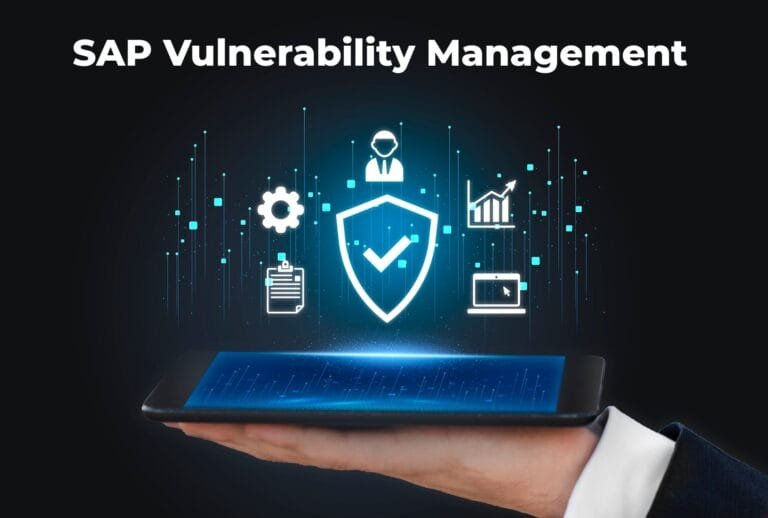Securing Systems: Applied Security Architecture and Threat Models
In an era marked by digital interconnectivity, it is critical to protect systems against impending dangers. In today’s digital environments, security is more than just a requirement; it’s a preventive measure that protects the availability, confidentiality, and integrity of our digital infrastructure.
The comprehension of threat models and applied security architecture stand out as crucial foundations in this protective effort. These components provide the cornerstone for building strong defenses against possible dangers, providing a framework reinforced by methods, tools, and preventative actions.
We will take an in-depth look into the specifics of system security using applied security architecture and a sophisticated comprehension of threat models in the next story. Join us as we define these terms and examine how they can be used in real-world scenarios to understand the preventative steps that are crucial to securing digital assets in a constantly changing threat environment.
Understanding Security Architecture
The fundamental plan that protects an organization’s digital assets from possible threats is known as security architecture. It is not just a collection of security technologies; rather, it is a whole framework that includes design, structure, and principles that create a strong defense.
Defining Security Architecture
Security architecture, at its heart, is the overall plan used to protect confidential data, systems, and networks. It outlines the process for combining a wide range of elements, including software, hardware, rules, and processes, to create a strong security posture.
Components of Robust Security Architecture
A robust security architecture comprises several key components working in synergy to fortify the digital infrastructure:
- Firewalls: They serve as gatekeepers, keeping an eye on all incoming and outgoing traffic to ward against dangers and unwanted access.
- Encryption Protocols: Data security and confidentiality are ensured by the use of encryption techniques, even if they are intercepted by unauthorized parties.
- Access Controls: Strict access control implementation prevents unwanted users from entering, ensuring that only authorized staff have access to sensitive information or systems.
- Intrusion Detection Systems (IDS): These technologies quickly identify and warn against questionable activity by continuously scanning networks for possible dangers.
- Authentication Mechanisms: By increasing the security layers and lowering the possibility of unwanted access, multifactor authentication, and biometric verification are recommended.
Holistic Approach to Security

An architecture for security is strong because it takes a comprehensive approach. To establish a complete defensive strategy, it incorporates policies, procedures, and personnel training in addition to technology solutions. A comprehensive security posture that adjusts to changing threats is ensured through collaboration between IT, security teams, and users.
The Role of Risk Assessment
There isn’t a single security architecture that works for every situation. To find weaknesses, assess possible threats, and adjust security measures appropriately, involves ongoing risk assessments. Effective risk mitigation can be achieved by implementing customized security measures after an organization’s specific threats have been identified.
Threat Models in Security
Threat modeling is a proactive and planned method for recognizing, understanding, and reducing possible risks to a system or organization in the field of cybersecurity. Identifying and fixing vulnerabilities before hostile actors do, acts as an essential tool in improving the security posture.
What are Threat Models?
Threat models are methodical representations of potential weak points, attack routes, and scenarios that may compromise a system’s security. These models, which simulate different hazard situations, provide an organized method for assessing and comprehending possible risks.
Importance of Threat Modeling
Threat modeling is important because it is preventive. Through careful identification of possible threats and weaknesses, businesses can strategically deploy resources to strengthen weak points before their exploitation. It facilitates comprehension of the intricate interactions between variables that may jeopardize system or data integrity.
Types of Threat Models
- STRIDE Model: A popular threat modeling methodology is called STRIDE (Spoofing, Tampering, Repudiation, Information Disclosure, Denial of Service, Elevation of Privilege). By classifying threats according to these six criteria, it enables businesses to more thoroughly identify potential vulnerabilities.
- DREAD Model: Threats are evaluated by DREAD (Damage, Reproducibility, Exploitability, Affected Users, Discoverability) according to their possible consequences. It assists in identifying and fixing the most important vulnerabilities by quantifying risks based on these five qualities.
Common Security Threats
Many hazards exist over the systems and networks in today’s digitally connected world, presenting serious risks to data availability, confidentiality, and integrity. It is essential to comprehend these risks to properly reinforce defenses.
Overview of Prevalent Security Threats
- Malware: Malware is a broad category that includes a variety of harmful software, such as trojans, worms, ransomware, and viruses, that are intended to compromise networks, cause disruptions, and steal confidential data.
- Phishing Attacks: Phishing attacks use deceptive methods, frequently through emails or phony websites, to fool people into disclosing private information, such as login passwords or bank account information.
- Ransomware: This kind of malware encrypts information, and computers and demands a ransom to unlock it. Organizations may suffer greatly as a result of operations disruptions or sensitive data breaches.
- Data Breaches: Unauthorized access to sensitive data can result in data exposure or theft, which is known as a data breach. These breaches may be the consequence of malevolent intent, human incompetence, or system weaknesses.
- DDoS Attacks: Attacks known as Distributed Denial of Service (DDoS) flood a system or network with traffic, preventing authorized users from accessing it.
Impact of Security Threats
These security threats can have severe repercussions:
- Financial Losses: Data theft, ransom payments, and interrupted operations can cause large financial losses for organizations.
- Reputational Damage: Customers’ and stakeholders’ trust can be undermined by security breaches, which can harm an organization’s reputation.
- Legal and Regulatory Consequences: Violations of data protection laws may result in significant fines and legal action.
Implementing Security Measures
It takes a thorough and proactive approach that incorporates a variety of strategies and best practices to secure systems against the wide range of threats that they face.
Strategies for Implementing Security Measures

- Encryption: Sensitive data should be encrypted thoroughly to ensure that it cannot be decoded even in the event of illegal access.
- Regular Software Updates: Updating software and security updates regularly helps in fixing vulnerabilities that are already known.
- Employee Training: Human error-based security breaches are less likely when staff members are trained on security best practices, such as spotting phishing attempts and using strong passwords.
- Access Controls: Strict access control measures ensure that sensitive information or vital systems are only accessible by authorized individuals.
- Multi-factor Authentication (MFA): By requiring several forms of verification, adopting MFA reduces the risk of unwanted access and adds an extra layer of security.
Best Practices in Securing Systems
- Defense in Depth: Using many security layers in a multi-layered strategy lessens the chance that a single point of failure will compromise the system as a whole.
- Regular Security Audits: Finding vulnerabilities and ensuring adherence to security requirements are made easier by regularly conducting security audits and assessments.
- Patch Management: Keep up a strong patch management system to quickly fix security flaws as soon as they’re discovered.
- Monitoring and Response: Potential security breaches can be quickly detected and responded to by putting incident response strategies and continuous monitoring systems into place.
Adapting Security Measures to the Threat Landscape
Because cyber dangers are always changing, security solutions must also be flexible. It is essential to keep informed of new risks, adapt security procedures, and make the required adjustments as soon as possible.
Adapting to Evolving Threats
Threat actors are always coming up with new strategies, making the digital scene dynamic. Therefore, it is essential to modify security measures to fight new threats. Maintaining a step ahead of any threats is made easier with the help of ongoing education, sharing of threat intelligence, and frequent security assessments.
Case Studies and Examples
Real-world examples offer priceless insights into how to deploy security architectures efficiently by showcasing successful tactics and security breach lessons learned.
Case Study 1: Financial Institution X
- Challenge: Financial Institution X’s client data and financial integrity were at risk due to ongoing cyber threats.
- Solution: They put in place a multi-layered security architecture that included personnel training, frequent security assessments, and strong encryption. They have implemented real-time monitoring systems to quickly identify and address any dangers.
- Outcome: The extensive security architecture significantly reduced the possibility of money fraud and data breaches. The institution was able to protect consumer data and financial assets by preventing attempted cyberattacks thanks to real-time surveillance.
Case Study 2: Company Y – Ransomware Attack Response
- Challenge: Critical data for Company Y was encrypted by a ransomware assault, endangering the company’s ability to continue operations.
- Response: With a strong incident response plan in place, the business quickly isolated the compromised systems, made backups, and hired cybersecurity professionals to lessen the ransomware’s effects.
- Outcome: Even though the attack briefly interrupted things, data loss was kept to a minimum thanks to prompt action and adherence to the incident response plan. Using backups, the business quickly resumed operations and improved security protocols to avert such occurrences.
Role of Continuous Monitoring
Constant monitoring provides real-time information on potential threats and vulnerabilities and is essential to preserving the integrity and effectiveness of security measures.
Importance of Continuous Monitoring
- Real-time Threat Detection: By giving constant insight into network activity, continuous monitoring makes it possible to identify irregularities and possible security breaches as soon as they happen.
- Immediate Incident Response: Security teams may react quickly to security incidents, reducing their impact and preventing escalation, by using real-time alerts and notifications.
- Identifying System Weaknesses: Regular monitoring reveals possible holes or flaws in security setups, enabling prompt fixes or modifications.
Tools and Approaches for Continuous Monitoring
Intrusion Detection Systems (IDS):
IDS tools discover and warn against unusual activity and possible breaches by continually monitoring network traffic.
Security Information and Event Management (SIEM):
SIEM solutions provide a thorough picture of system activity and security incidents by collecting and analyzing log data from several sources.
Endpoint Detection and Response (EDR):
EDR systems concentrate on identifying malicious activity, reducing risks, and monitoring and reacting to threats at endpoints (individual devices, for example).
Conclusion
In today’s digital environment, securing systems with applied security architecture and threat models is not only a choice but a requirement. Organizations can improve their defenses against emerging cyber threats by recognizing possible dangers, putting proactive measures in place, and understanding the particulars of security architecture.
FAQs
Why is threat modeling important in system security?
Threat modeling helps in identifying and mitigating potential risks before they can be exploited by attackers, enhancing system security.
What are some common security measures organizations can adopt?
Encryption, regular software updates, employee training, and access controls are among the crucial security measures.
How does continuous monitoring contribute to system security?
Continuous monitoring enables real-time threat detection and response, ensuring proactive mitigation of security risks.
What role does security architecture play in safeguarding systems?
Security architecture provides the framework and principles to design robust defenses against potential threats to systems.
Why is it essential to adapt security measures to evolving threats?
Threats in the digital landscape constantly evolve, and adapting security measures helps in staying ahead of potential risks.







